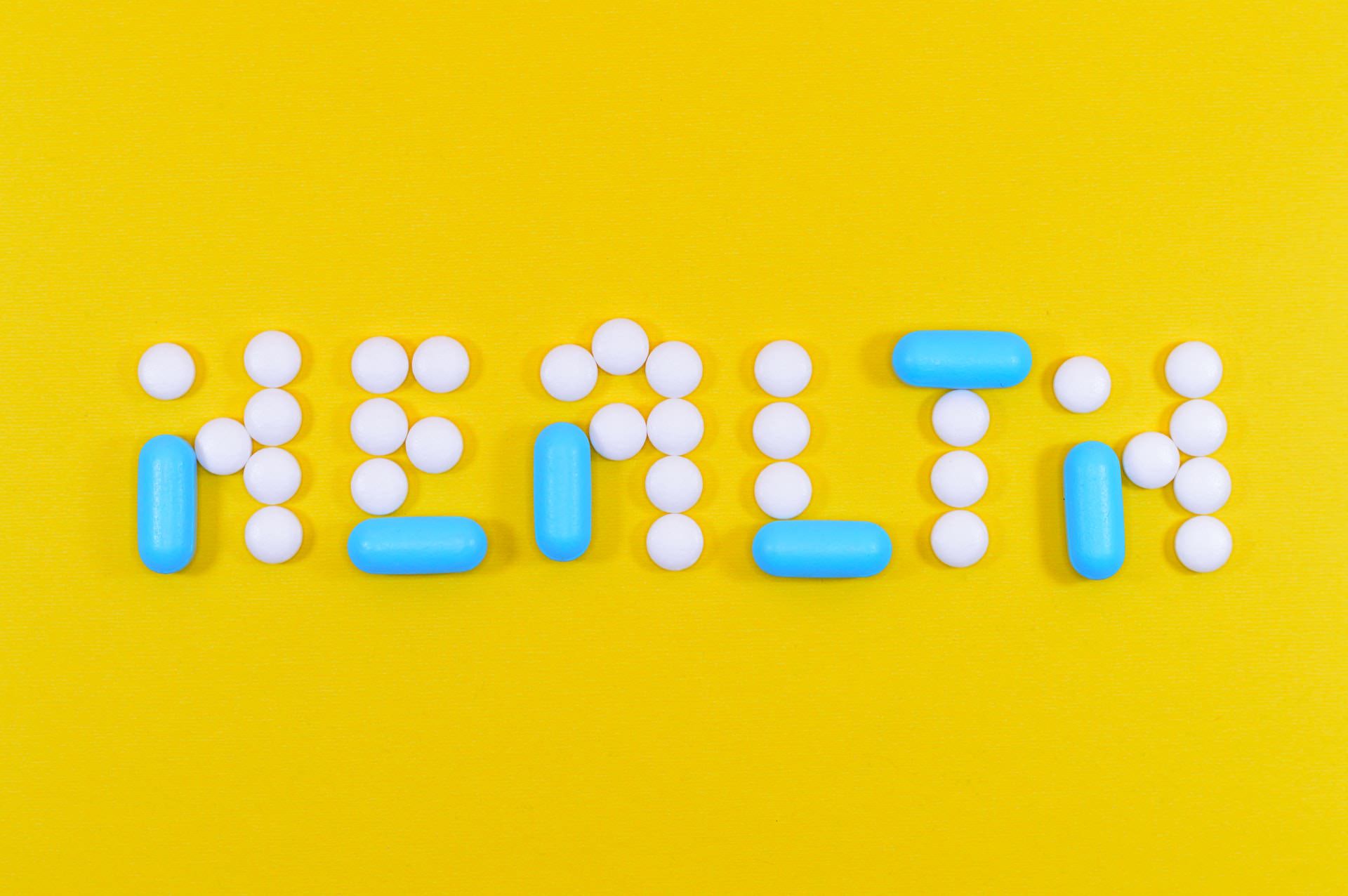Bifidobacterium longum is a rod-shaped, Gram-positive, anaerboic bacterium strain in the Bifidobacterium genus of the phylum Actinobacteria (1,2).
Bifidobacteria are prokaryotes, which mean that they are unicellular organisms that do not have a membrane-bound nucleus, mitochondria, or membrane-bound organelle (3).
These bacteria are considered obligate anaerobes, which have a very low oxygen tolerance and die in the presence of oxygen. Furthermore, Bifidobacterium have a high guanine and cytosine nucleotide content, and are non-motile and non-spore forming (4).
Bifidobacteria represent about three to six-percent of the adult fecal flora (3).
As of 2018, there are 51 species of Bifidobacterium and 10 subspecies (4).
This genus of bacteria is noted as some of the initial colonizers of the gut, with certain Bifidobacteria species frequently detected as gut commensals during early life and childhood. In addition, bacteria in this genus are well-known for their importance in the homeostasis, or balance of the gut ecosystem (5).
Reduced numbers of Bifidobacteria in the gut early in life has shown to predispose humans to increased risk of inflammatory diseases such as obesity, diabetes mellitus, digestive issues such as inflammatory bowel disease, as well as allergic diseases (6).
Bifidobacterium longum in the lifespan of gut health
Bifidobacterium longum subsp. longum has prevalence in both children and adults and persists in the gut throughout the lifetime (4).
Newly acquired strains of Bifidobacterium longum can provide many health benefits to the human host. From birth, human milk contains prebiotic oligosaccharides that are consumed by Bifidobacterium and Bacteroides and help shape the gut microbiome of the infant (6,7).
Bifidobacterium longum subsp. infantis, which is detected in infants and not adults, has the unique ability to transport into the cytoplasm of cells and consume the full range of human milk oligosaccharides (6). These prebiotic oligosaccharides are not digestible by the host infant.
A 2017 study looked at the effect of Bifidobacterium longum subsp. infantis treatment on breastfed infants. Study results show that of those infants whose mothers received the probiotic treatment for 21 days (day 7 to day 28 of life), 22 of the 32 infants achieved measurable levels of Bifidobacterium colonization for the first 60 days of life (6). Ten of these infants were able to maintain populations of the bacterium greater than 50-percent during this period.
This study suggests that Bifidobacterium longum subsp. infantis may be able to help shape a healthy gut for infants to reduce risk of conditions such as necrotizing enterocolitis and to increase vaccine response (7).
Besides B. longum subsp. infantis and longum, the bacterium B. longum also includes the subspecies B. longum subsp. suis which is characteristic to porcine, pig, intestinal microbiota (2). These subspecies are found to be three distinct species through genetic analysis (2,8).
Bifidobacterium longum, like many species of the Bifidobacterium genus with the exception of B. animalis, has a low tolerance to acid (8).
When Bifidobacterium longum is exposed to low pH, an overproduction of subunits of F0-F1-ATPase occurs. This in turn, counteracts the H+ accumulation that occurs because of the impact of low pH exposure on the proton motive force, or energy production and distribution (8,9).
Bifidobacterium longum is one of the most adaptive species of Bifidobacterium which is due to its familiarity with the human gut environment, and therefore is an ideal bacterium for use in probiotics and other health products.
Applications of Bifidobacterium longum
Bifidobacterium longum strains are commonly used as components of health foods and drug products. They have been linked with health effects such as prevention of diarrhea, lessening of lactose intolerance symptoms, and positive alteration of the immune system (3).
Origins & Functions
Origins
Bifidobacterium were first discovered in 1900 by French pediatrician Henry Tissier when he observed that the stool of children with diarrhea contained low numbers of Y-shaped bacteria (10).
These bacteria were called “bifid” bacteria due to their two equal parts, or lobes, that created the “Y” shape (11). They were seen in abundant amounts in healthy children. It is suggested that this finding was the origin of thinking that such bacterium could be used as a supplement to improve gut health and treat related health conditions (10).
Bifidobacterium longum subsp. longum was first isolated from calf feces and from the adult human intestine, as reported by Reuter in 1963 (12).
In 2002, based on DNA-DNA hybridization values above 70-percent, the subspecies B. longum subsp. longum, subsp. suis, and subsp. infantis were unifed as members of the Bifidobacterium longum species (13). However, this did not last long, since in 2008, further genetic research and study of the differences in carbohydrate fermentation patterns of each subspecies, among other things, found that these subspecies should be discriminated.
Functions
The functions of Bifidobacterium longum and related strains in this species are very specific to each strain and include:
- Immunomodulation, or the ability to modify the function of the immune response (14). Bifidobacterium longum strains have shown the ability to induce the reproduction of cytokines such as the regulatory interleukin-10 and pro-inflammatory tumor necrosis factor-alpha (15). This shows that the bacterium can potentially modulate the immune response in either direction, depending on its application.
- Anti-inflammatory effects such as reducing immune host responses (16).
- Improved biotin metabolism, which can aid in improved digestive health and carbohydrate metabolism (17).
Potential health benefits
Bifidobacterium longum is a widely studied bacterium and has been linked with a variety of health benefits.
Bifidobacterium longum has been shown to have anti-inflammatory, immune-enhancing, and immune-strengthening properties in digestive, respiratory, metabolic, and mental health conditions.
Listed below are examples of the diverse range of applications that Bifidobacterium longum has in the treatment of many aspects of health.
Digestive health benefits
Bifidobacterium longum is widely known for its ability to improve health outcomes in gut health conditions.
A 2018 study looked at infants treated with a formula supplemented with Bifidobacterium longum subsp. infantis CECT7210 (18). Study results show that those infants treated with the probiotic had less diarrheal episodes and lower constipation prevalence.
In adults, Bifidobacterium longum was found to prevent various digestive conditions in the intestinal tract and colon.
For example, one study found that Bifidobacterium longum-treated yogurt increased the number of short-chain fatty acids and suppressed the growth of disease-causing bacteria such as putrefactive bacteria and Bacteroides fragilis enterotoxin (19). This probiotic treatment also showed a significant level of cell-growth inhibitory activity, and in turn may help prevent colorectal carcinogenesis in healthy subjects.
Other digestive research results involving Bifidobacterium longum include the following:
- Could help prevent ulcerative colitis: In a rat model of colitis, an engineered B. longum successfully secreted a penetratin-hMn-SOD fusion protein (20). This protein was then delivered into human epithelial cells (Caco-2), and in turn significantly decreased expression of immune system markers such as tumor necrosis factor-alpha and interleukin-6 as well as the ROS, or oxidative stress level.
- May be helpful in treating gluten-related disorders: In a mouse model of gluten sensitivity, B. longum NCC2705 lessened gliadin-induced immunopathology (21). In particular, the bacterium produced a serine protease inhibitor (Srp). In humans, those with active celiac disease have decreased expression of elafin, a human serine protease inhibitor, in the duodenum of the small intestine.
- May be helpful as a part of treatment for C. difficile: Most of the cell-free culture supernatant, or medium, of the commercial strain Bifidobacterium longum JDM301 was able to inhibit the growth of C. difficile infection (22). C. difficile infection causes symptoms such as severe diarrhea, abdominal cramping and pain, nausea, dehydration, loss of appetite, and weight loss (23). Another Bifidobacterium longum strain, ATCC 15707, was investigated in a mouse model and found to repress the infection caused by C. difficile 027 (24).
Respiratory benefits

Bifidobacterium longum may also help improve the health of those with respiratory conditions such as allergies and asthma.
- A 2017 study looked at the effect of a probiotic containing Lactobacillus gasseri KS-13, Bifidobacterium bifidum G9-1, and Bifidobacterium longum MM-2 on those with seasonal allergies (25). Those who took the probiotic for 8 weeks had a reported improvement from baseline and as compared with the placebo group in their Mini Rhinoconjunctivitis Quality of Life Questionnaire (MRQLQ), which measures quality of life in those with allergies.
- A 2017 study found that children with pollen-induced allergic rhinitis and intermittent asthma given a mixture of Bifidobacterium longum Bb536, Bifidobacterium infantis M-63, and Bifidobacetrium breve M-16V for four weeks had significantly improved allergic rhinitis symptoms (26).
- In an animal model of mice without ovaries, which serves as a model for menopause, the effect of Bifidobacterium longum 51A on allergic airway inflammation was tested (27). Study results show that the bacterium given 10 days after ovariectomy was able to lessen lung inflammation and hyperresponsiveness, of which the latter is a sign of asthma.
- In a study of Malaysian school children between 2 and 6 years old, the effect of Bifidobacterium longum BB536 on upper respiratory illness and gut health was studied (28). Study results show that over 10 months of treatment, the bacterium reduced duration of sore throat by 46-percent, reduced runny nose by 15-percent, marginally reduced duration of fever, and reduced cough by 16-percent as compared to placebo. In addition, significant differences in gut microbiota were observed from baseline in the probiotic group, with no differences seen in the placebo group.
Metabolic benefits

Bifidobacterium longum research reveals benefits in metabolic health in areas such as obesity, liver disease, and kidney disease.
- Bifidobacterium longum BORI and Lactobacillus paracasei CH88 treatment for 9 weeks significantly suppressed weight gain and lipid deposition and improved fasting blood glucose levels in mice fed a high-fat diet (29).
- A combination of Bifidobacterium longum LC67 and Lactobacillus plantarum LC27 helped lessen colitis and liver injury in a mouse model by helping to restore balance in the gut microbiome (30).
- In a rat model, a combination of prebiotics glutamine, dietary fiber, and oligosaccharide along with Bifidobacterium longum bacterium was found to improve kidney function in a secondary hyperparathyroidism model by improving gut health (31).
Mental health benefits

Bifidobacterium longum has been found to have some potential impact on mental health conditions.
- A 2017 study was done on adults with irritable bowel syndrome and diarrhea, or a mixed stool pattern, with mild to moderate anxiety and/or depression (32). After six weeks of treatment with Bifidobacterium longum NCC3001, reduction in depression scores was observed in 14 of 22 patients versus only 7 of 22 patients in the placebo group. No changes were seen in those with anxiety, but fMRI testing revealed the probiotic’s ability to reduce limbic reactivity, of which a higher level is associated with depression.
- A 2016 study found that treatment of healthy volunteers with Bifidobacterium longum 1714 resulted in reduced stress and improved memory (33).
- A rat model of Alzheimer’s disease looked at the effect of eight weeks of treatment with a probiotic mixture of Lactobacillus acidophilus, L. fermentum, Bifidobacterium lactis, and Bifidobacterium longum (34). Study results show that significant improvements of spatial memory such as shorter escape latency and improvements in oxidative stress biomarkers were seen in those rats treated with probiotics.
Other potential health applications
Bifidobacterium longum bacterium is also being studied for potential use in the following areas of health.
- A 2018 randomized, double-blind, placebo-controlled trial looked at the effect of a probiotic VSL #3 (Lactobacillus paracasei, L. plantarum, L. acidophilus, L. delbrueckii, Bifidobacterium longum, B. breve, B, infantis, Streptococcus salivarius; maltose; and silicon dioxide) on children with severe sepsis (35). Study results show that after 7 days of treatment, those in the probiotic group had significantly reduced levels of proinflammatory cytokines, interleukin-17, and tumor necrosis factor-alpha as well as higher levels of anti-inflammatory cytokines as compared to the placebo group.
- Since gram-positive Bifidobacteria do not produce endotoxins, and therefore do not produce endotoxin shock, this bacterium has shown potential to act as a drug delivery system for those with cancerous tumors (36). In particular, Bifidobacterium longum has shown its potential to act as an anti-cancer drug-delivery system by using the bacterium to release anti-tumor antibodies to targeted tumor tissues.
- A 2018 study found that certain strains of Bifidobacterium subsp. infantis and Bifidobacterium bifidum that possess high degradative abilities, can be used as probiotic treatment to help rid of food-derived opioid peptides (37). Such a treatment could help improve host health by reducing inflammation and oxidative stress caused by certain foods in susceptible individuals.
Form of taking it
Besides being consumed in the form of fermented food products such as yogurt or cheese, Bifidobacterium longum can also be consumed in the form of a powder added to food or drink items or swallowed in a capsule or tablet form.
Encapsulations such as a whey protein concentrate-pectin-alginate based delivery system, have been found to protect the bacterium from simulated gastric juice and intestinal fluid as compared to free cells (38).
Possible side effects
Various strains of Bifidobacterium longum such as Bifidobacterium longum BGN4, Bifidobacterium longum and Bifidobacterium longum subsp. infantis EVC001 have been tested and found to produce no significant adverse side effects (39, 40).
Therefore, this bacterium is deemed safe to consume by humans as a probiotic supplement.
What to look for when buying
Before buying a product containing Bifidobacterium longum, check the label carefully.
A third-party verification for safety and quality can reassure you that the probiotic you are purchasing is what the label says it is (41).
Some unverified probiotic supplements may be full of fillers or may contain less of a concentration of bacterium than what is stated on the label since supplements are not required to be approved by the Food and Drug Administration (42).
Unfortunately, some companies use this to their advantage and market products falsely to deceive consumers and make money off weak and ineffective products.
It’s a good idea to get a recommendation on whether bifidobacterium longum through your healthcare provider. Doctors, naturopaths, and some acupuncturists are examples of some healthcare providers that may be able to refer you to quality brands that fit well with your health profile. Also, consuming probiotic-rich foods in their purist form can provide you with an unadulterated dose of Bifidobacterium longum.
[expand title=”References”]
- Bag, S., Ghosh, T.S., and Das, B. (October 2017) “Whole-Genome Sequence of Bifidobacterium longum Strain Indica, Isolated from the Gut of a Healthy Indian Adult.” Genome Announcements, 5(41): e01017-17.
- Chaplin, A.V., et al. (2015) “Intraspecies Genomic Diversity and Long-Term Persistence of Bifidobacterium longum.” PLoS ONE, 10(8): e0135658.
- Schell, M.A., et al. (October 29, 2002) “The genome sequence of Bifidobacterium longum reflects its adaptation to the human gastrointestinal tract.” PNAS, 99(22): www.pnas.org/cgi/doi/10.1073/pnas.212527599
- Arboleya, S., et al. (2018) “Gene-trait matching across the Bifidobacterium longum pan-genome reveals considerable diversity in carbohydrate catabolism among human infant strains.” BMC Genomics, 19:33, DOI: 10.1186/s12864-017-4388-9
- National Center for Biotechnology Information (accessed July 11, 2018) “Bifidobacterium longum.” https://www.ncbi.nlm.nih.gov/genome/?term=Bifidobacterium%20longum%20subsp.%20longum[Organism]&cmd=DetailsSearch
- Frese, S.A., et al. (Nov.-Dec. 2017) “Persistence of Supplemented Bifidobacterium longum subsp. infantis EVC001 in Breastfed Infants.” mSphere, 2(6): e00501-17
- Underwood, M.A., German, J.B., Lebrilla, C.B., and Mills, D.A. (January 2015) “Bifidobacterium longum subspecies infantis: champion colonizer of the infant gut.” Pediatric Research, 77(0): 229-235.
- González-Rodríguez, I., Ruiz, L., Gueimonde, M., Margolles, A., & Sánchez, B. (2013) “Factors involved in the colonization and survival of bifidobacterial in the gastrointestinal tract.” FEMS Microbiology Letters, 340(2013): 1-10.
- National Center for Biotechnology Information (accessed July 11, 2018) “Proton-Motive Force.” https://www.ncbi.nlm.nih.gov/mesh/68018892
- Oyetayo, V.O. and Oyetayo, F.L. (February 2005) “Potential of probiotics as biotherapeutic agents targeting the innate immune system.” African Journal of Biotechnology, 4(2): 123-127.
- Dictionary.com (accessed July 11, 2018) “bifid.” http://www.dictionary.com/browse/bifid
- Bunesova, V., Vlkova, E., Rada, V., Killer, J., and Musilova, S. (June 2014) “Bifidobacteria from the gastrointestinal tract of animals: differences and similarities.” Beneficial Microbes, 5(4): 1-12.
- Mattarelli, P., Bonaparte, C., Pot, B., and Biavati, B. (2008) “Proposal to reclassify the three biotypes of Bifidobacterium longum as three subspecies: Bifidobacterium longum subsp. longum subsp. nov., Bifidobacterium longum subsp. infantis comb. Nov. and Bifidobacterium longum subsp. suis comb. nov.” International Journal of Systematic and Evolutionary Microbiology, 58: 767-772.
- Wei, Y-X., et al. (August 2010) “Complete Genome Sequence of Bifidobacterium longum JDM301.” Journal of Bacteriology, 192(15): 4076-4077.
- Medina, M., Izquierdo, E., Ennahar, S., and Sanz, Y. (2007) “Differential immunomodulatory properties of Bifidobacterium longum strains: relevance to probiotic selection and clinical applications.” Clinical and Experimental Immunology, 150: 531-538.
- Schiavi, E., et al. (December 2016) “The Surface-Associated Exopolysaccharide of Bifidobacterium longum 35624 Plays an Essential Role in Dampening Host Proinflammatory Responses and Repressing Local TH17 Responses.” Applied and Environmental Microbiology, 82(24).
- Sugahara, H., et al. (2015) “Probiotic Bifidobacterium longum alters gut luminal metabolism through modification of the gut microbial community.” Scientific Reports, 5:13548, DOI: 10.1038/srep13548
- Escribano, J., et al. (2018) “Bifidobacterium longum subsp infantis CECT7210-supplemented formula reduces diarrhea in healthy infants: a randomized controlled trial.” Pediatric Research, 83:1120–1128.
- Ohara, T., et al. (January-June 2018) “Intake of Bifidobacterium longum and Fructo-oligosaccharides prevents Colorectal Carcinogenesis.” Euroasian Journal of Hepatogastroenterology, 8(1):11-17. doi: 10.5005/jp-journals-10018-1251.
- Xie, Y., et al. (2017) “Anti-inflammatory properties of Bifidobacterium longum expressing human manganese superoxide dismutase using the TNBS-induced rats model of colitis.” Journal of Microbiology and Technology, doi: 10.4014/jmb.1703.03044. [Epub ahead of print]
- McCarville, J. L., et al. (2017) “A Commensal Bifidobacterium longum Strain Prevents Gluten-Related Immunopathology in Mice through Expression of a Serine Protease Inhibitor.” Applied and Environmental Microbiology, 83(19), e01323–17. http://doi.org/10.1128/AEM.01323-17
- Wei, Y., et al. (2018) “Protective Effects of Bifidobacterial Strains Against Toxigenic Clostridium difficile.” Frontiers in Microbiology, 9, 888. http://doi.org/10.3389/fmicb.2018.00888
- Mayo Clinic (accessed July 11, 2018) “C. difficile infection.” https://mayoclinic.org/diseases-conditions/c-difficile/symptoms-causes/syc-20351691?p=1
- Yun, B., Song, M., Park, D.-J., & Oh, S. (2017) “Beneficial Effect of Bifidobacterium longum ATCC 15707 on Survival Rate of Clostridium difficileInfection in Mice.” Korean Journal for Food Science of Animal Resources, 37(3), 368–375. http://doi.org/10.5851/kosfa.2017.37.3.368
- Dennis-Wall, J.C., et al. (March 1, 2017) “Probiotics (Lactobacillus gasseri KS-13, Bifidobacterium bifidum G9-1, and Bifidobacterium longum MM-2) improve rhinoconjunctivitis-specific quality of life in individuals with seasonal allergies: a double-blind, placebo-controlled, randomized trial.” The American Journal of Clinical Nutrition, 105(3): 758–767, https://doi.org/10.3945/ajcn.116.140012
- Del Giudice, M. M., et al. (2017) “Bifidobacterium mixture (B longum BB536, B infantis M-63, B breve M-16V) treatment in children with seasonal allergic rhinitis and intermittent asthma.” Italian Journal of Pediatrics, 43, 25. http://doi.org/10.1186/s13052-017-0340-5
- Mendes, E., et al. (2017) “Prophylactic Supplementation of Bifidobacterium longum 51A Protects Mice from Ovariectomy-Induced Exacerbated Allergic Airway Inflammation and Airway Hyperresponsiveness.” Frontiers in Microbiology, 8, 1732. http://doi.org/10.3389/fmicb.2017.01732
- Lau, A.S., et al. (2018) “Bifidobacterium longum BB536 alleviated upper respiratory illnesses and modulated gut microbiota profiles in Malaysian pre-school children.” Beneficial Microbes, 9 (1): 61 – 70.
- Kang, D., Li, Z., and Ji, G.E. (2018) “Anti-Obesity Effects of a Mixture of Fermented Ginseng, Bifidobacterium longum BORI, and Lactobacillus paracasei CH88 in High-Fat Diet-Fed Mice.” Journal of Microbiology and Biotechnology, 28(5): 688-696.
- Jang, S.-E., Jeong, J.-J., Kim, J.-K., Han, M. J., & Kim, D.-H. (2018) “Simultaneous Amelioratation of Colitis and Liver Injury in Mice by Bifidobacterium longum LC67 and Lactobacillus plantarum LC27.” Scientific Reports, 8, 7500. http://doi.org/10.1038/s41598-018-25775-0
- Iwashita Y., et al. (2018) “Dietary Changes Involving Bifidobacterium longum and Other Nutrients Delays Chronic Kidney Disease Progression.” American Journal of Nephrology, 47:325-332.
- Pinto-Sanchez, M.I., et al. (August 2017) “Probiotic Bifidobacterium longum NCC3001 Reduces Depression Scores and Alters Brain Activity: A Pilot Study in Patients With Irritable Bowel Syndrome.” Gastroenterology, 153(2): 448-459.
- Allen, A. P., et al. (2016) “Bifidobacterium longum 1714 as a translational psychobiotic: modulation of stress, electrophysiology and neurocognition in healthy volunteers.” Translational Psychiatry, 6(11), e939. http://doi.org/10.1038/tp.2016.191
- Athari Nik Azm, S., et al. (2018) “Lactobacilli and bifidobacterial ameliorate memory and learning deficits and oxidative stress in ß-amyloid (1-42) injected rats.” Applied Physiology, Nutrition, and Metabolism, 43(7): 718-726, https://doi.org/10.1139/apnm-2017-0648
- Angurana, S.K., et al. (2018) “Evaluation of Effect of Probiotics on Cytokine Levels in Critically Ill Children With Severe Sepsis: A Double-Blind, Placebo-Controlled Trial.” Critical Care Medicine, doi: 10.1097/CCM.0000000000003279. [Epub ahead of print]
- Taira, Y., Taira, I., Nisikawa, T., and Ishida, I. (2018) “[Development of an Anticancer Therapy Using Recombinant Bifidobacterium as a New Drug Delivery System (DDS)].” Yakugaku Zasshi: Journal of the Pharmaceutical Society of Japan, 138(7):923-930. doi: 10.1248/yakushi.17-00220-4.
- Sakurai, T., Yamada, A., Hashikura, N., Odamaki, T., and Xiao, J.Z. (2018) “Degradation of food-derived opioid peptides by bifidobacteria.” Beneficial microbes, 9(4):675-682. doi: 10.3920/BM2017.0165. Epub 2018 Apr 10.
- Yasmin, I., Saeed, M., Pasha, I., and Zia, M.A. (2018) “Development of Whey Protein Concentrate-Pectin-Alginate Based Delivery System to Improve Survival of B. longum BL-05 in Simulated Gastrointestinal Conditions.” Probiotics and Antimicrobial Proteins, doi: 10.1007/s12602-018-9407-x. [Epub ahead of print]
- Kim, M. J., et al. (2018) “Safety Evaluations of Bifidobacterium bifidum BGN4 and Bifidobacterium longum BORI.” International Journal of Molecular Sciences, 19(5), 1422. http://doi.org/10.3390/ijms19051422
- Smilowitz, J.T., et al. (May 30, 2017) “Safety and tolerability of Bifidobacterium longum subspecies infantis EVC001 supplementation in healthy term breastfed infants: a phase I clinical trial.” BMC Pediatrics, 17(1): 133. Doi:10.1186/s12887-017-0886-9
- Sanders, M.E., et al. (November-December 2016) “Probiotic use in at-risk populations.” Journal of the American Pharmacists Association, 56(6): 680-686. https://www.sciencedirect.com/science/article/pii/S1544319116307324
- Harvard Health Publishing (February 2018) “The growing role of probiotics.” https://www.health.harvard.edu/staying-healthy/the-growing-role-of-probiotics
[/expand]
